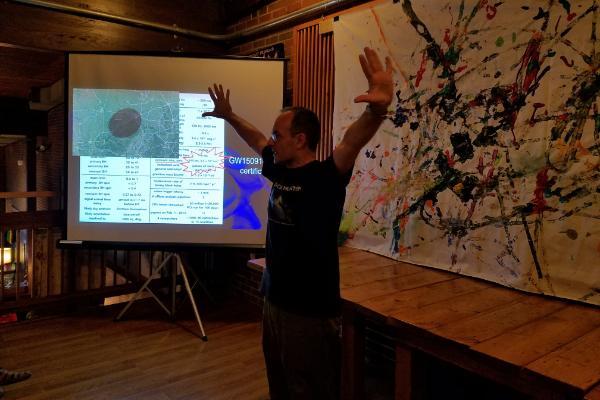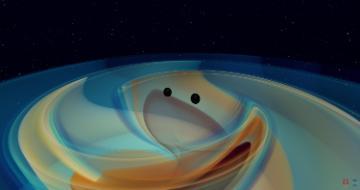The most massive black hole merger detected yet!
The LIGO Scientific Collaboration (LSC) and the Virgo Collaboration announced earlier today the detection of the most massive black hole merger yet observed in gravitational waves. The two merging black holes had a mass of about 85 and 66 times the mass of the sun and merged into a black hole with a mass of about 150 times that of the sun, releasing the energy of about eight suns. The two black holes were located roughly 15 billion light years away from Earth, making this event one of the most distant gravitational-wave sources detected so far. The international team of scientists have reported their findings in a Physical Review Letters paper, detailing the discovery, and a The Astrophysical Journal Letters paper, discussing the signal’s physical properties and astrophysical implications. Three IMAC researchers and students are among the authors of the two papers. Read LIGO-Virgo's press release.
GW190521: A Binary Black Hole Merger with a Total Mass of 150 Msun

New windows to the sky
Astrophysics and cosmology are the studies of the Universe. In recent years, two interconnected areas of research have moved to the forefront of these disciplines: Multi-messenger astrophysics and precision cosmology. The former studies high-energy celestial phenomena through complementary physical carriers such as electromagnetic waves, gravitational waves and cosmic rays. The latter studies the large-scale structure of the Universe to reveal its origin and fate. Together, multi-messenger astrophysics and precision cosmology allows scientists to unravel the deepest mysteries of the Universe, such as its origin and composition.
In the past few years, multi-messenger astrophysics and precision cosmology have exponentially grown in importance in the physics research community. The Institute of Multi-messenger Astrophysics and Cosmology (IMAC) plays a prominent role in these research areas, putting S&T at the center stage of modern astrophysical research.
News
Research and education
Multi-messenger astrophysics
-600x400.jpg)
The last decade has seen the birth of multi-messenger astrophysics. In the years to come, optical, particle and gravitational-wave astronomy will continue to explore the cosmos and redefine our understanding of the universe. IMAC is part of this new, exciting branch of science.
Cosmology
-600x399.jpg)
The origin and dynamics of the cosmic acceleration is a central problem of fundamental physics. IMAC researchers work to shed light on this problem and understand the nature of dark matter and dark energy.
Education and outreach

IMAC formal and informal educational initiatives aim at promoting science in the Missouri community and bringing the wonder and excitement of scientific discovery to audiences of all ages and backgrounds.
Contact Us
Interested in discussing IMAC research and educational activities? Please contact us.
Marco Cavaglia
Director, professor of physics
573-341-4781 | cavagliam@mst.edu |
1315 North Pine Street, Rolla, MO 65409


Follow Institute for Multi-messenger Astrophysics and Cosmology